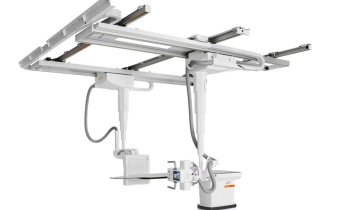Benefits of surgery for prostate cancer
According to a major recent study, appearing in the July 27 issue of the "Journal of Clinical Oncology," there is a definite downstaging trend for prostate cancer. The study, which surveyed almost 13,000 American men who had a radical prostatectomy (surgical removal of a cancerous prostate gland) between 1987 and 2005, found that only 12% of them died of the cancer. This is great news, according to Dr. David B. Samadi, Chief of Robotics and Minimally Invasive Surgery at The Mount Sinai Medical Center in New York City.
"The take-away message of this study shows that radical prostatectomy works well," says Dr. Samadi, who has successfully treated over 2,000 prostate cancer patients with robotic surgery using the da Vinci robotic technique. As mentioned previously, the results determined that 15 years later, 12 percent had died from cancer, and yet the chances of death by natural causes were 38%, greater than for those with prostate cancer.
Dr. Samadi believes that this downstaging of prostate cancer is due to the increased expertise of surgeons, along with improved patient education and public awareness of the disease. Doctors are detecting cases in earlier stages, when it's more organ confined. Patients are getting screened regularly and working closely with their doctors to monitor their PSA levels and Gleason scores. Gleason scores are a system of grading prostate cancer, which assigns a grade to the areas of cancer in the tissue samples. This is particularly important when dealing with a disease known as the "silent killer," which often exhibits no symptoms.
The technological evolution of surgery has made robotic prostatectomy the number one treatment option because it is less invasive than the older modalities, such as radiation therapy. Robotic prostatectomy involves the surgical removal of the prostate, which spares the delicate nerves responsible for continence and sexual function. Radiation therapy, which uses high doses of radiation to destroy cancer cells, is usually best recommended after surgery to destroy any remaining cancer cells.
For early-stage prostate cancer, however, this study lends credibility to the theory that prostatectomy is the best treatment available for long-term survival. In the hands of an experienced robotic surgeon like Dr. Samadi, the cancer cure rate is over 95%, there is less incidence of rectal bleeding, the future risk of secondary carcinoma is avoided and the dreaded side effects of incontinence and impotence are eliminated. "Previously, surgeons did not have such a level of magnification, a bloodless field to work in and often had a higher risk of leaving cancer behind," said Samadi.
Dr. Samadi noted that the study, which took place over the course of 1987-2005, paints a radically different picture than that of today's patients. With technological advances, earlier screening and better patient education, Samadi would estimate the morbidity rate to be closer to 5% percent. If a newer study were to incorporate a contemporary series of robotic surgery patients, Samadi is optimistic that the downstaging trend and the prognosis outlook for prostate cancer 20 years from now will be even more positive.
About David B. Samadi, MD
Dr. Samadi is a board-certified urologic oncologist trained in open, laparoscopic, and robotic surgery. He is one of the world's most experienced da Vinci surgeons with a professionally acknowledged level of success. Samadi is one of the only surgeons in the country to have completed two fellowships: one in oncology at Memorial Sloan Kettering Cancer Center in New York, and the other in laparoscopy at Henri Mondor Hospital in France.
Source
David B. Samadi, MD
29.10.2009






